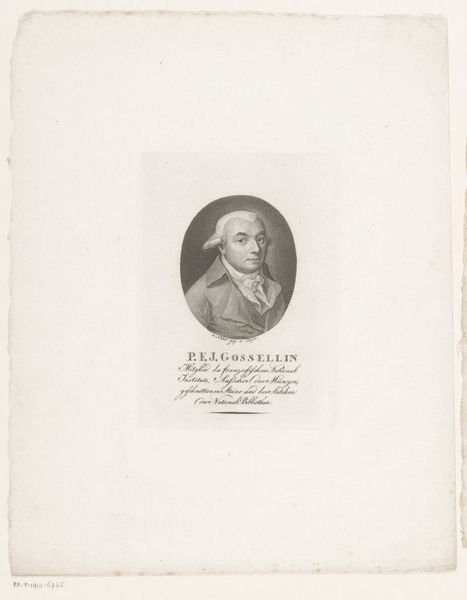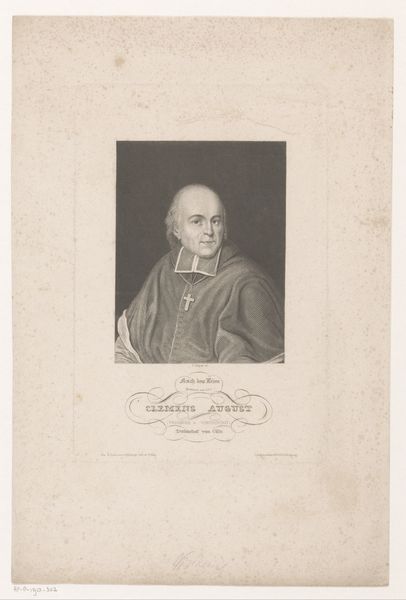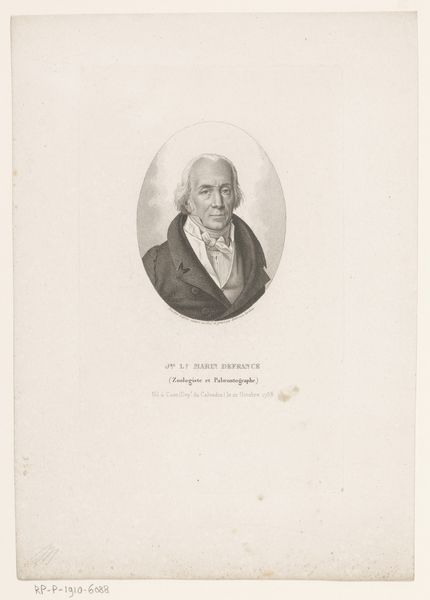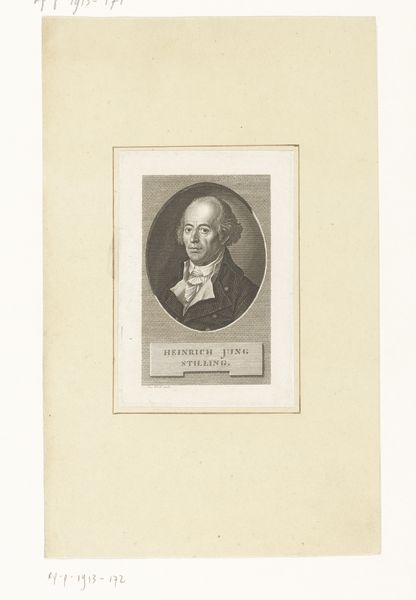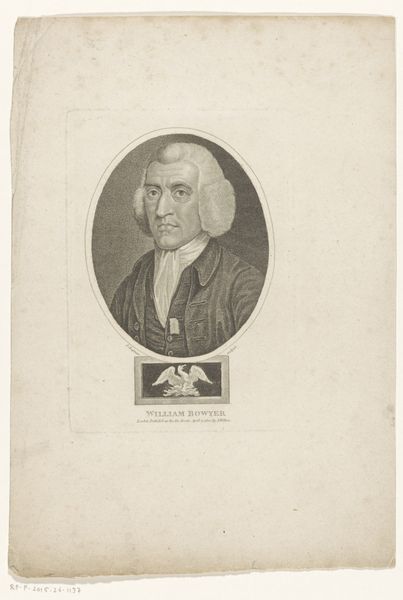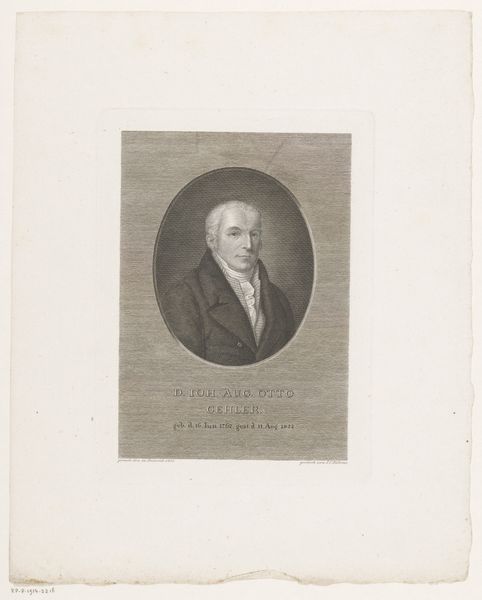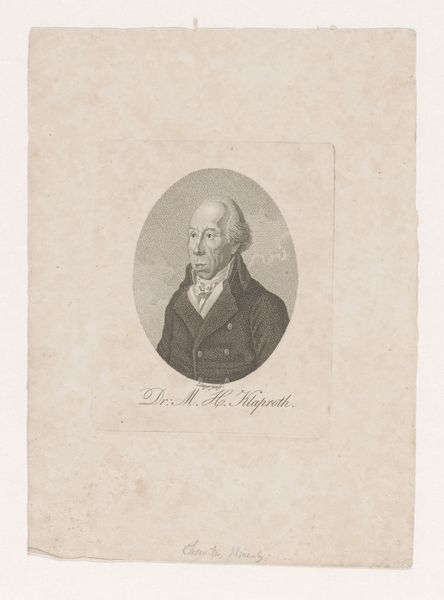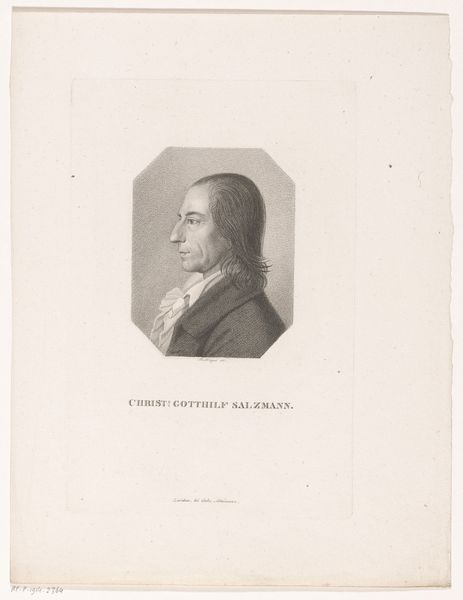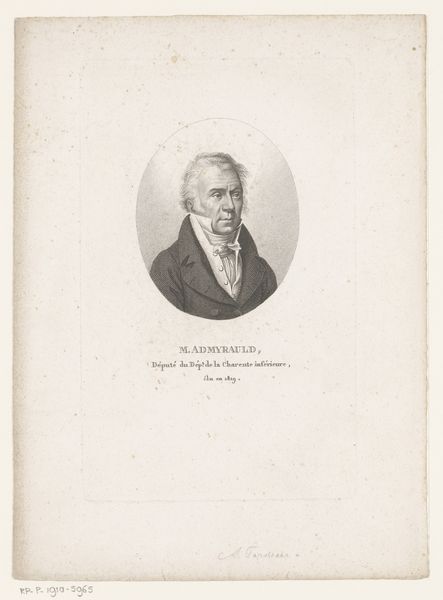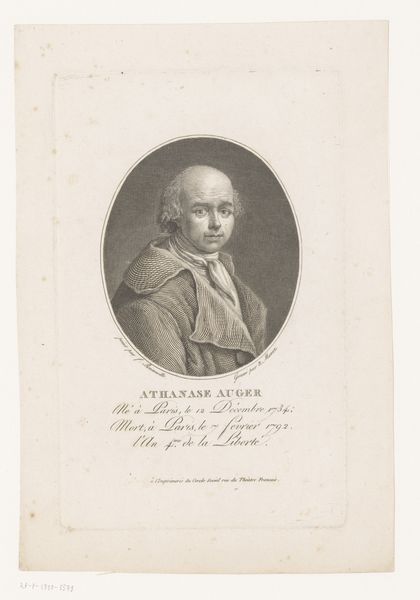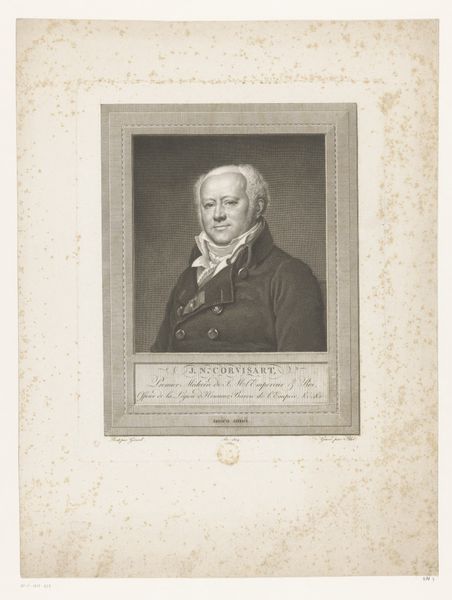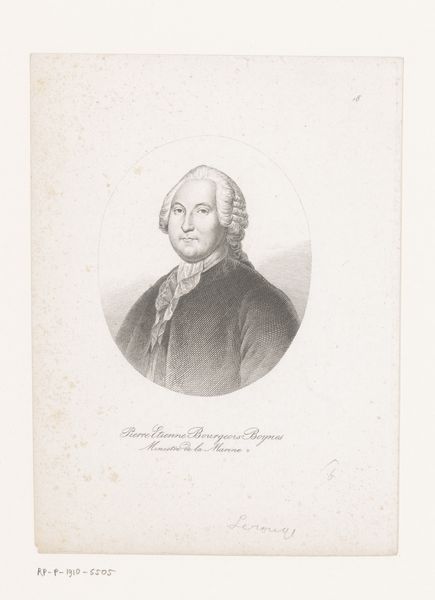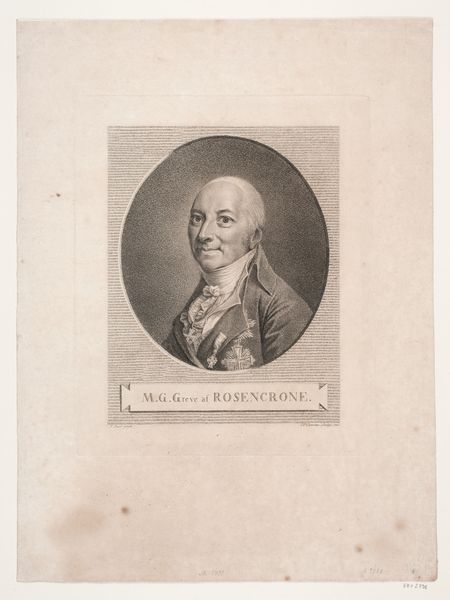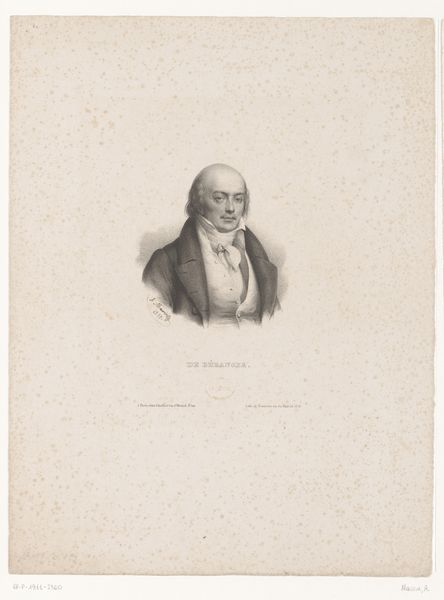
Portrait of Joseph Marie Jacquard (1752–1834) c. 19th century
0:00
0:00
print, weaving, textile, engraving
#
portrait
#
neoclassicism
# print
#
weaving
#
textile
#
engraving
Dimensions: 16.2 × 10.4 cm (6 3/8 × 4 1/2 in.)
Copyright: Public Domain
Curator: This neoclassical portrait of Joseph Marie Jacquard is quite striking. Editor: It has a very reserved and classical feel, wouldn't you agree? The grayscale palette and sharp lines add to the stern, formal mood. Curator: It certainly reflects the Neoclassical style that was dominant when it was created, sometime in the 19th century. Bonnefond, the artist, captured Jacquard's likeness in what appears to be either an engraving or a very detailed print. But Jacquard's story goes much deeper than the conventional image of a dignitary. Editor: What’s intriguing is how such an image ties into a bigger conversation about labour, mechanisation and innovation, particularly regarding textiles. How are we meant to process it now, knowing the complicated history surrounding such things? Curator: Indeed. Jacquard’s contributions with the Jacquard loom – a device that automated textile weaving with punch cards – completely revolutionised that industry. His legacy intersects sharply with both celebratory accounts of technological advancement and critical analyses of the displacement of human labor it entailed. Editor: Absolutely. You see it in those almost rigid lines of the portrait, and then consider how his invention was changing lives of weavers, creating new economic realities but also, perhaps, a certain kind of societal anxiety. The power dynamics inherent in such invention become immediately relevant to a modern viewer. The portrait doesn't explicitly tell us all that, but the knowledge informs our interpretation. Curator: And it brings up further questions around representation. Portraits in this style, particularly during that era, frequently represented only those in positions of power and influence. Here, the textile medium reminds us that his contributions fundamentally reshaped manufacturing—while simultaneously highlighting disparities that intensified with industrial expansion. Editor: Exactly! In this context, such an artistic statement also encourages us to engage more honestly with what narratives have become standard in museum displays: Are we celebrating an inventor or exploring systemic implications embedded within societal shifts driven by advancements that might affect the distribution of opportunity or wealth within textile industry jobs, for instance. Curator: Precisely, seeing him through today's perspectives calls into question systems of historical appreciation as it relates to equality or representation, offering room not merely celebrate Jacquard's vision or inventiveness solely because how effectively things worked technically rather how societies managed their transformations regarding fairness Editor: Right. Viewing the piece, my mind isn't on beauty, or perfect angles or composition, but the sheer, impactful shifts happening through what Jacquard achieved! A stern rendering, yes, and an industrial quake—depicted in a relatively small print. Curator: A fascinating tension to unpack, I think. Editor: Definitely worth our pondering today!
Comments
No comments
Be the first to comment and join the conversation on the ultimate creative platform.
